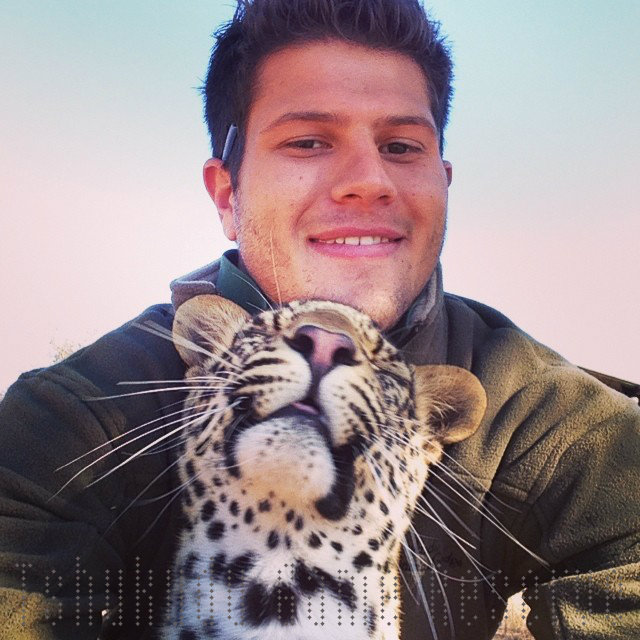One of the most special aspects to my job here in South Africa, is having the opportunity to work with Tia and Zaro – two exceptional leopard (Panthera pardus) cubs that were captured and abandoned by their mother as infants.
Although it is a delight for me to have developed such a relationship with two leopard cubs – it is an extremely sad story of how they ended up at Tshukudu Game Reserve…..
Again, it comes down to farmers and their need for protecting livestock. I want to point out here that I do understand that farmers have to protect their living – we all guard our homes, possessions, and livelihoods, but it does not have to come at the cost of endangering some of the most beautiful animals to walk this earth!
In this particular incident the farmer feared that his livestock was in danger and so trapped the leopards on his land – this happens more often than not in this part of the world unfortunately. As it happened, the two leopard cubs were left within the trap as the mother scarpered and abandoned both cubs! My mother probably thought of doing that numerous times with my brother and I, but fortunately she put up with us!
At this age, with their paws large in proportion to their bodies, fur that looked like it belonged to a teddy bear and cute faces that could melt the darkest of hearts….they were taken in as pets. Only, when they quickly grew larger and larger, it was soon apparent that they were not “pet material” and they were passed on to the Tshukudu Reserve to be raised safely and with the best interests of the leopards.
Now, both one year and two months old, with their distinctive dark spots called rosettes (as the shape resembles a rose), Tia and Zaro are settled into life at Tshukudu, with trained staff looking after them…..residing in a big enclosure with plentiful trees and vegetation and as if wild, they take their food up the trees to feast.
Leopards are astoundingly strong and are known to climb trees with heavy prey, to protect their kill and rest on the branches during the day.
I find it fascinating how despite their lack of interaction with their mother or other leopards, that Tia and Zaro’s natural instincts have taught them to behave just as a wild leopard would therefore. They are starting to learn how to stalk and hunt also, which to my enjoyment, they practice on us and objects.
They are both extremely playful, however each have their own characteristics…. Tia is cheeky and mischievous and loves to get herself into trouble and have us running around after her! When she knows she has been caught “red handed” although, she will always want cuddles and attention. Zaro on the other hand, is a lot more relaxed, yet gets jealous of the frolicsome nature of Tia and the attention she creates……..no different to having two children on the reserve!
Unfortunately, due to their interaction with humans, they will never be released back into the wild and so will be part of a breeding project, where their cubs will be released into the wild instead.
Farmers need educating on the ways to safely manage such animals visiting their land! The animals definitely do not need to be killed nor do they need to be kept in captivity – they can be released back into the wild. A special unit in Hoedspruit are trying to combat this by capturing the leopards and releasing them into the wild, away from land used for farming.
Although a sad story for Tia and Zaro, they will help to create a positive story in terms of increasing leopard populations and battling the ongoing endangerment of leopards in South Africa!…….and I have the privilege of working with these incredible animals every day – and can even add to my predator-selfie collection…..
















